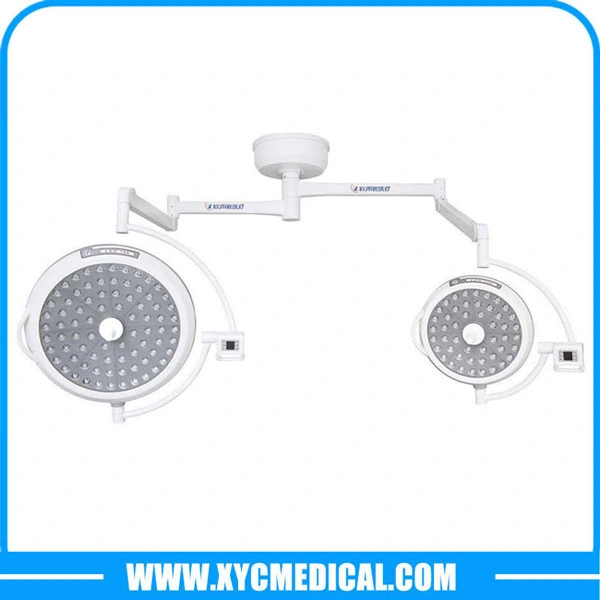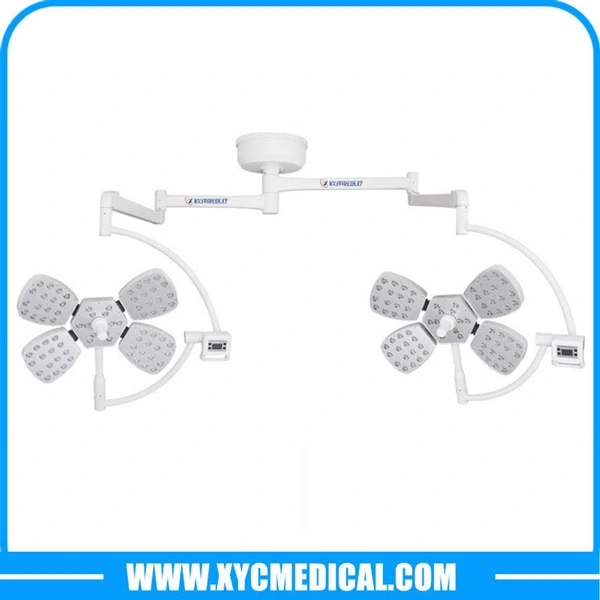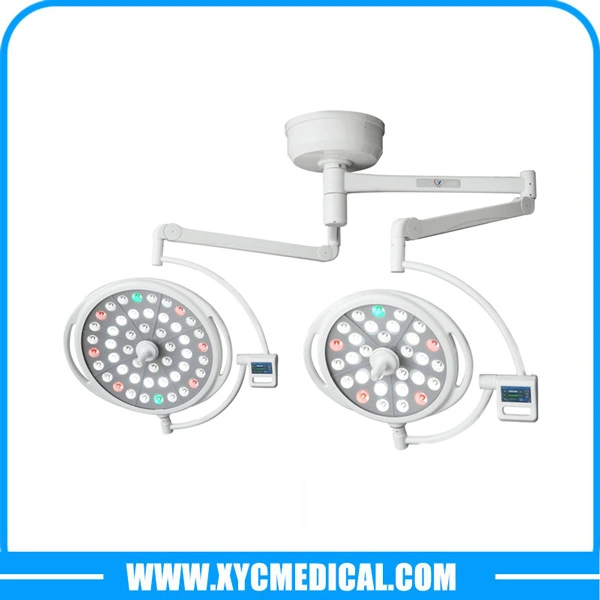Basics of Operating Light in Operating Theater
Operating lights, also known as surgical light or operating room light, are primarily used in hospital operating rooms and ambulatory surgery centers, but can also be used in different locations throughout the facility to provide high-quality lighting for operations.
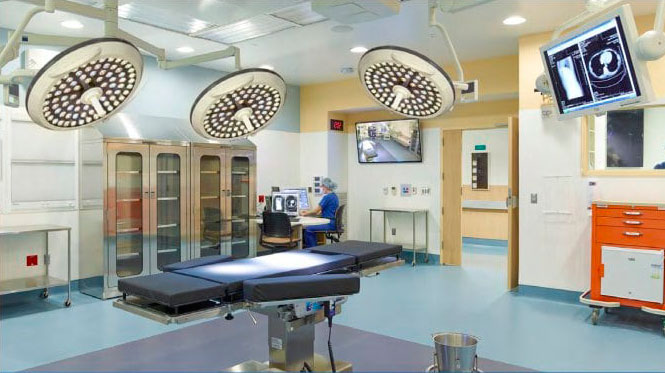
1. Operating Light Overview
1.1 Application
Operating light are lighting devices used primarily in surgery. These lamps provide a homogeneous light, without shadows, on the area to be operated on, to help doctors accurately and consistently assess and interpret tissue and vessel appearance.
1.2 Can operating light really eliminate shadows?
Normally, when light hits opaque objects, shadows are created, the deepest shadow in the middle is called umbra, the surrounding area that gradually becomes lighter is called the penumbra. Operating light adopts a circular plate containing lamps that glow in all directions, increasing the area of the light source, so that the umbra becomes lighter, and the penumbra is so light that it cannot be seen, achieve shadowless effect, to enable the surgery to proceed smoothly.
1.3 Characteristics of operating light should have
① Shadow control, cold light, multi-reflective system design, make sure the surgical area is shade-free; Equipped with cold light filter and cold light reflector to minimize heat radiation.
② Lightweight structure, wide range of adjustment, stability, with removable light handle, operators can easily adjust the lighting needed for surgery by adjusting the light handle and central control panel.
③ The shape of lamp conforms to the requirements of laminar flow purification operating room, which ensures the convection circulation of purified air in operating room, and keeps the surgical area sterile.
④ Realistic light color, close to natural light. It's easy to identify the smallest differences in tissue and reduce eye strain for surgeons.
⑤ Reserve central camera system, for teaching, research and management purposes
1.4 Types of surgical light
① According to the type of light source, it can be divided into halogen operating light and LED operating light. The luminous principle of halogen lamp is the energy conversion of Electricity - Heat - Light. That is, heating after the electricity through the filament, then generate light. This light-emitting method has low efficiency and high temperature. LED lamp is a cold light source, it is a direct electro-optical conversion, low energy consumption, real cold light surgical lighting.
② According to the mounting method, it can be divided into ceiling mounted operating light, wall mounted operating light, mobile type operating light, etc.
③ According to the functional requirements, it can be divided into single head, double head and multi-head operating light, also operating light with camera system etc. Double head Operating light have become the first choice for most hospital operating rooms, One lamp head as the main light, providing the main illumination, Another light head as an auxiliary light to provide auxiliary lighting, to make up for the blind spot of the main light. In addition, it can also provide backup lighting in the first instance, when there is a problem with the main light.
1.5 Structure composition of surgical light
① Lamp head: Lamp head provides almost shadowless illumination directly to the operation area, or we can interpret it as a source of light. According to different working principles, manufacturers in the market have designed lamp heads in various shapes, some with other features. Therefore, it can be said that the lamp head is the core of operating light.
② Rotating arm is the part connecting the upper mounting fixture (lamp base) and the lower spring arm, includes the central axis and the rotating cross arm on the central axis, it can be rotated 360 degrees, greatly increasing the horizontal working area of the lamp.
③ Spring Arm: For balancing the lamp head, so that it can be positioned accurately at any designated location, increasing horizontal, up and down working area of the lamp head. Pull the spring arm and lamp head bend joint, can move up and down and axially rotate the lamp head at will. Push the disinfection handle to turn the lamp head, back and forth, left and right, adjust the lamp head to the desired position.
④ Installation fixing component (lamp base) is generally designed to the long suspension tube shape, A flange structure is connected at the end, the flange structure connects to a hidden part of the ceiling space. The other end of the suspension tube jutted from the ceiling and connected to the rotating arm. A circular cover is installed outside the ceiling to hide the structure inside.
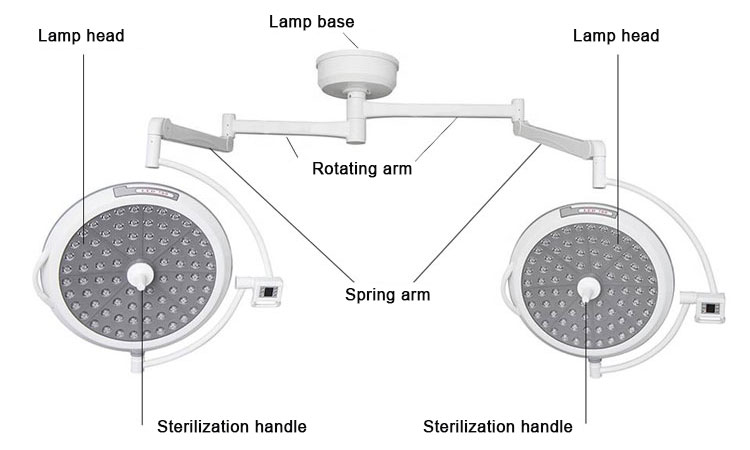
2. Operation point of the surgical light
2.1 Check the appearance of the operation lights and the joint arms before use to ensure that they work properly.
2.2 Note the switch sequence to avoid damaging the bulb.
Opening sequence: Turn on the main power switch - operating light switch - adjust light brightness
Closing sequence: Turn down the brightness of the light to the minimum - turn off the operating light switch - main power switch
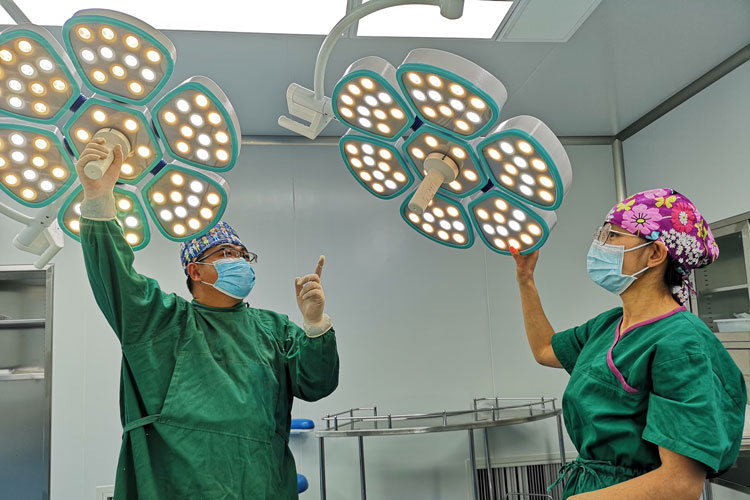
3. Adjustment of operating light
3.1 Activity adjustment
The operating light can be raised or lowered vertically or rotated horizontally to move the connections of the joint arms according to their function, allow joint parts to rotate 340 or 360 degrees.
Preoperatively, the surgical light and operating table should be adjusted appropriately according to the type of surgery, line up the rotating arm of the light with the table, and approximately adjust the position of the two lamp heads, make the main light perpendicular to the surgical field, auxiliary light can do circular movement, and make sure that the rotating arm of two lamp heads will not cross.
After turning on the switch in sequence after the operation starts, lighting can be adjusted by the circulating nurse to follow the view of the surgeon, or adjusted by surgical staff using the sterilization handle.
When installing the sterilization handle, two "clicks" should be clearly heard, indicating that the handle is in place and is working normally.
3.2 Illumination adjustment
Illumination intensity, luminous flux of visible light received per unit area, abbreviated illumination, unit is lux, for indicating the intensity of light and the illuminated level of the object's surface area.
Illumination can simply be understood as whether the light is bright enough. Illumination uniformity refers to whether light is uniform enough, illumination should have a certain height, the light irradiation surface is larger, more uniform.
The larger the lamp head (single head operating light) or the more lamp heads, the better its illumination depth, more suitable for deeper surgeries.
Illumination can be adjusted for surgical needs, the illumination of the operating room light is brightest at the position of 1000mm from the glass surface of the lamp head, the light column gradually decays both upward and downward, In theory, 20% to 10% of the maximum brightness in the longitudinal region is normal to meet the need for surgery. The working distance of the operating light are typically 70 to 160cm, optimal for 100cm.
During surgery, surgeons must be able to accurately distinguish the contours and colours of the lesion area. Therefore, operating room light need to provide close to daylight quality and even higher illumination intensity. According to the European Electrical Organization and chinese industry standard regulations for surgical light, illumination range of 40,000 to 160,000 lux, to help doctors diagnose more accurately and avoid eye strain caused by long hours.
3.3 Light spot adjustment
In the lighting area, the entire area encompassed by the illumination of the light edges reaches 10% of the center illumination, the specific shape formed by the light in this range.
Operating lighting beam diameter range of 10-30cm, and has the function of light spot adjustment, different spot sizes to fit different sized surgical areas.
3.4 Color temperature adjustment
Color temperature, absolute black body heated to a certain temperature, black body emits light contains the spectral composition is called the color temperature at this temperature. The color presented after heating from absolute zero (-273 degrees), changes from black to red to yellow to white, finally emitting blue light, the unit of measurement is the kelvin.
Color temperature is the scale of of light source light color. Light normally seen by the human eye is composed of seven colors of light, some of the lights are blue and some are red, color temperature is the method used to measure and calculate the color content of light. The lower the color temperature, the more yellow warm light, easy to make people tired. The larger the color temperature, the more white cold light, easy to excite people. Color rendering of operating room lighting sources should be close to natural light, The color temperature should be between 4000K and 5000K. High-grade LED operating light add color temperature adjustment function, to reduce eye fatigue or increase doctor excitement, and make it easier to distinguish between field tissues in different types of surgery.
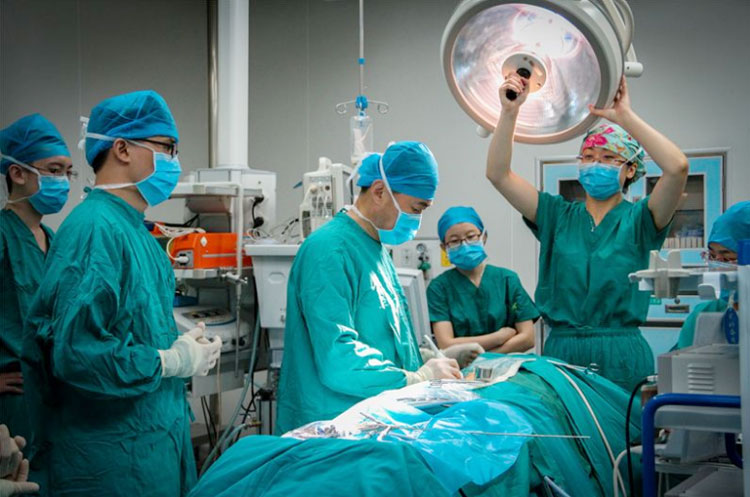
4. Other features of operating light
4.1 Strobe : Under 220V/50Hz (1 second current completes 50 times sine wave conversion) AC power, 100 identical flashes of light and dark per second. As the current increases, the light gets brighter, the current gets smaller, the light gets dimmer, which goes from dark to light, and then from light to dark. For these changes, the brain can't actually tell(visible changes are within 30Hz). However, the eye muscles that control pupil contraction are detectable. If the operating lights are flashing, it can increase the visual burden on the doctor, leading to hallucinations and negative consequences. Operating room lights can be provided by internal or external light sources, so no ballast is required to solve the problem.
4.2 Glare : Due to unsuitable brightness distribution in the field of view, or the presence of extreme brightness in space and time, glare can affect physician vision and eyesight, easily cause eye fatigue, which is not conducive to surgery. The infrared and glare components of the light can be minimized and eliminated through lens and filter design. Glare from the light beam hitting the surgical instruments should also be avoided as much as possible during surgery.
4.3 Color rendering : Effects of light sources on color tables of objects, it occurs when the observer, consciously or unconsciously, compares it to a color table under a reference light source. By comparing the color of the object's appearance under reference or benchmark light source at the same color temperature, it's an indicator of color fidelity, the higher the color rendering index, the closer the object gets to its true color. If long-term under the light source with poor color rendering, the cones of the human eye become less sensitive, the brain focuses more when it is consciously or unconsciously discerning things, easy to cause eye strain, affecting eyesight. The color rendering index of operating room light should be close to natural light (Ra=100).

5. Maintenance of operating light
5.1 Cleanliness maintenance
Clean the surface of the operating light with water or a weak alkaline solvent before daily activation or at the end of each operation.
When blood and body fluids are contaminated, the principle of washing first and disinfecting later should be followed. Choose neutral disinfectant, avoid strong acids and bases touching surfaces, and avoid chlorine detergent (harmful metals) and alcohol detergent (harmful plastics and paints)
Pressure steam sterilisation (high temperature sterilisation, temperature below 135°C) can be used to sterilise the handle of the operating light.
5.2 Function Maintenance
Check the function of the operating light every day to keep it on standby. Check bulb status: Place a piece of white paper in the surgical light workspace, If curved shadows appear, this means the bulb is not working properly and should be replaced.
Regularly check the main body of the operating light, each function button and joint loosening condition.
Check the damping of the light regularly to avoid the drift of the lamp head and arm.
Check the spring strength of the operating light regularly to avoid the phenomenon of insufficient elasticity or elastic overload.
Annual inspection should be carried out by licensed engineer, and any problems shall be reported to the equipment department or manufacturer in time for repair.
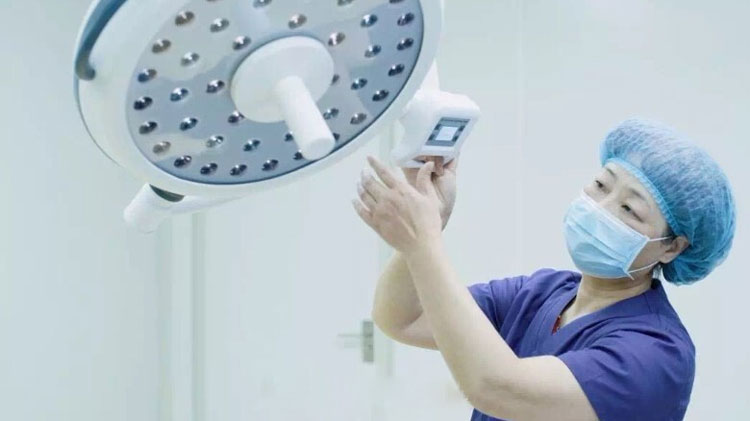
6. Conclusion
A suitable lighting environment will allow medical staffs to "see clearly and look longer".
"Seeing clearly" is not distorted color, able to distinguish organs, shading without shadows. In surgery, lasting color retention is a prerequisite. For example, red is red, and if the original color becomes a different color when exposed to a light source, this can lead to a doctor's misjudgment. When the incision is deep, it can form a partial shadow in the deep cavity, obstructing the doctor's view, due to the the obscuration of the surgical instrument. To see clearly, the operating light can meet the requirements by maintaining a constant color rendering index, adjusting the color temperature and having a high shadowless effect.
"Look longer" means looking comfortable and long. For doctors, the light spot formed in the surgical field is relatively soft and do not blink, it can effectively reduce visual fatigue. In addition, the doctor stood for a long time under the operating light, If the light produces more heat, and the light emitted is not isolated from infrared, the doctor's head temperature will rise, and also temperature increase at the site of the patient's surgery, loss of body fluids.
Article From: Shandong Xinyuchen Medical Equipment Co., Ltd.





